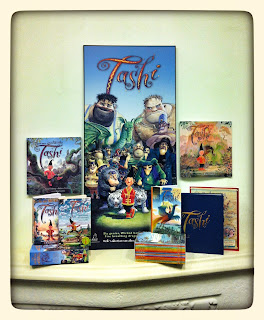In the High and Far-Off Times, O Best Beloved, the Publisher had no
stories. But she had a friend, a Literary Agent. And so that was all right, Best
Beloved. Do you see?
Sometimes, publishing is like trying to find your true love at a bar in the
CBD on a Friday night. There are a lot of fish in the sea, and not all of them
are going to *ahem* meet your exacting criteria. So, to narrow the field and
increase their chances of finding their one true love/the perfect book, publishers
often look to a matchmaker - otherwise known as a literary agent.
Agents know their clients' work, obviously, but one of their other great
skills is building deep and lasting relationships with publishers and editors,
and knowing exactly which book and author might suit which publisher. If a
literary agent you trust sets you up, chances are you'll be going home
together.*
Publisher Anna McFarlane remembers one such match-made-in-heaven:
My first day at Allen & Unwin was 20 July 2010. And while I was excited, I was also discombobulated. I had a desk, a print-out of procedures, a phone, a wall of bookshelves without any books in it, and an email address (although only one email -- the subject being 'Testing your email'). I was a blank slate and even though I was happy, Bad Thoughts were starting to pop into my head. Was this the right thing to be doing? Could I still publish books? Would I ever fall in love with a manuscript again? It was all rather nerve-wracking.
My first day at Allen & Unwin was 20 July 2010. And while I was excited, I was also discombobulated. I had a desk, a print-out of procedures, a phone, a wall of bookshelves without any books in it, and an email address (although only one email -- the subject being 'Testing your email'). I was a blank slate and even though I was happy, Bad Thoughts were starting to pop into my head. Was this the right thing to be doing? Could I still publish books? Would I ever fall in love with a manuscript again? It was all rather nerve-wracking.
But at 1:40pm on that very first day, I received my (second ever) email,
subject: 'New Book'.
-----------
Hello Anna
Welcome to your new home!! I know that today is your first day and you
probably haven't even found the mail room yet (first door on the left) but
wanted this to be the first thing I send you.
-----------
It was from Curtis Brown agent and MD Fiona Inglis and the 'this' was a new novel by the award-winning writer Andrew McGahan. Rather surprisingly to all involved (even him), Andrew had written a young-adult novel set on the high seas in a strange-but-familiar world. Luckily, I was able to read it straight away (empty inbox, after all) and very quickly I was captivated by the Great Ocean and the splendor of those tall ships, and longed to read more about Dow's journey from timber cutter to great mariner.
Reading the manuscript was a beautiful experience, not just because I was being transported by the story to a world of wild storms, terrible beauty and that dangerous and mysterious ocean, but also because those Bad Thoughts had disappeared.
It was day one and I had fallen in love with a manuscript. I desperately wanted to publish it. And (ironically if you know the story, which questions the very concept of destiny, and challenges the idea of portents and superstitions) it was also a sign that this was indeed the right thing to be doing.
And there you have it. True love fostered, fears allayed and zeal renewed,
all without Anna needing to leave her shiny** new desk.
Thank you, Fiona - and thank you to all the other agents who help us to find stories we love and authors we adore.
Thank you, Fiona - and thank you to all the other agents who help us to find stories we love and authors we adore.
* Metaphorically. METAPHORICALLY.
** Metaphorically. This is publishing, after all.














